The very first Dutch radish concept came out twenty years ago, and today Red Swing is still available. While the packaging tray is transparent now instead of black, and the radishes also come in white, purple or white-red, the sticker with the smiling radish wearing sunglasses has remained the same.
At grower Jongfresh, they are happy with the path they took at the time, and a new radish concept is already in the works. However, this time no flow pack machine from the bakery will be used. They made way for modern fresh produce flow packers.
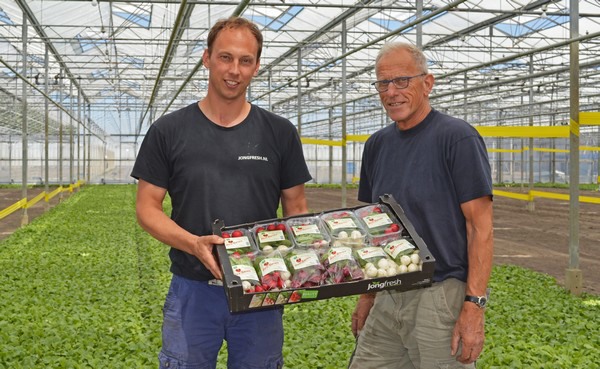
Erik and Peter de Jong
At the end of May Erik de Jong, a third-generation radish grower, laughs when thinking back to the old flow pack machine. The unique step, taken together with Syngenta and Disselkoen to distinguish radishes by providing a distinct face for the product through its packaging, brings back great memories.
Erik, the son of grower Peter de Jong, was not a part of the company at the turn of the century, but he knows the stories and can still find the promotional material from those days. “Around 1997, when the auction in the Dutch town of Westerlee stopped, you had the choice to go with the masses, auctioning your radishes and selling them ‘anonymously’ or to innovate and distinguish yourself from the herd. We chose the latter, which we actually already did in 1996 by selecting the name Jongfresh instead of P.S. M. de Jong. The radishes could only be found in stores as they were without packaging. Syngenta, Disselkoen, and the growers thought this could be done differently.
Packaging machine from a cookie factory
There were two reasons to start packaging the radishes. On the one hand, shelf life (Erik comes back to this point later on) and on the other the fact that packaging provides the opportunity to tell something about the product. “When the choice was made, all that was left to do was logistics. We invested in the machinery, Syngenta took care of the branding, and the logo and Disselkoen was in charge of sales, although we could do that as well when the concept was finalized.
"We were creative when it came to the machines. For instance, we acquired the packaging machine from a cookie factory and adjusted it to package radishes instead. Soon, an utterly improvised product line was formed with two ‘flower trays’ with a conveyor belt, sprinklers, and submersible pumps on top. For the packaging, we had a flow packer from the bakery painted in red and green.”

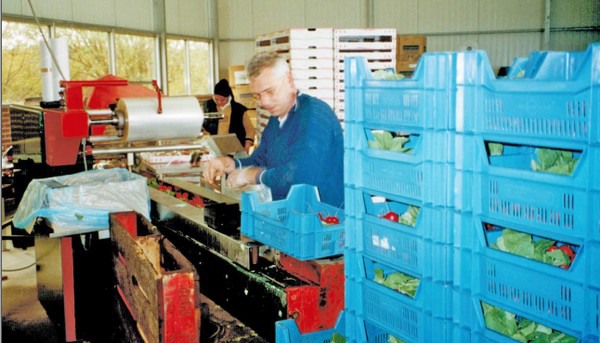
The beginning of the concept with an ‘improvised product line’ and a flow pack machine from a bakery
No copycats
Not that this was the end of the matter, on the contrary. Having the concept was one thing, but the ball needed to get rolling. “Among other things, we used flyers and, of course, word of mouth. In the beginning, it involved a few pallets a week, but the interest in something that was up until that point not seen in radishes increased quickly. It was unique and noticeable, and all of us together did what we could to bring the concept to the people. We were already accessible to the market. They even came to us because they thought the concept was ‘pretty interesting’.”
They have never been scared of copycats at Jongfresh. “The three of us have had the brand name and image protected by law from the beginning, although this did not exclude others from coming up with similar concepts. However, everyone in the radish market did their own thing, so it was not the case that people all of a sudden wanted to use the same concept as we did.”
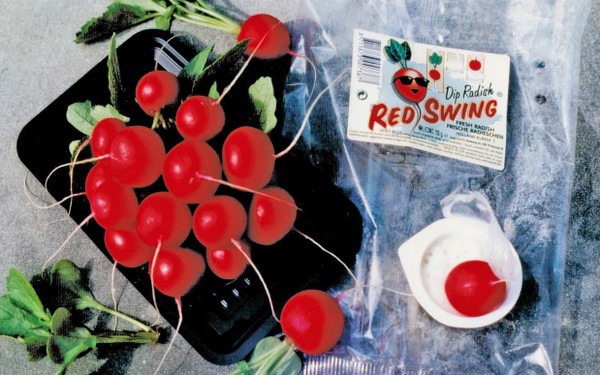
The concept with a sauce eventually didn’t make it
With sauce
From 2005 Jongfresh also included white radishes. The white radish is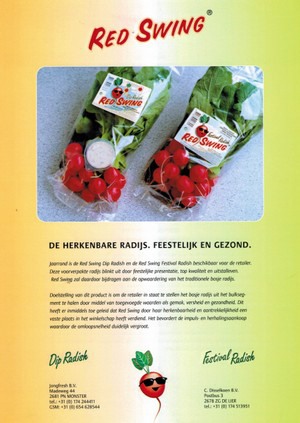 also marketed under Red Swing, just as the by now seven varieties of radishes that are mainly cultivated in the Dutch town of Monster.
also marketed under Red Swing, just as the by now seven varieties of radishes that are mainly cultivated in the Dutch town of Monster.
Before that, back in 2000, the idea of including a sauce crossed their minds. Erik quickly smiles when thinking of the experiment. “That was a great concept, and that’s what it was, with radishes and dipping sauces in the same packaging."
It might have been ahead of its time, causing a lot of buyers not to take the chance. It was sold in a Dutch supermarket, but when the supermarket was taken over, the concept, unfortunately, disappeared from its shelves, just like a lot of the sauce during the ‘experiment’, says Erik. “The problem had to do with the sauce's shelf life and the ‘cups’ that were available. Now there are new packaging techniques that make this combination possible, for instance, in ready-packed meal salads.”
Red Swing flyers were spread in, among other languages, Dutch, German, Italian, and English. The flyers included information about, for instance, the fact that 92 percent of consumers buy radishes as an impulse buy as research showed. “I don’t know whether or not the percentage is still that high, but it is certain that in this day and age, social media and influencers have a serious effect on the sales of products such as fresh fruits and vegetables.” See the enlarged version of the original flyer here.
Always looking around
Although the concept with the sauce didn’t make it at the time, Erik has not forgotten it, just like all the other steps that have been taken. He is still always looking around for new concepts. “Every development in greenhouse horticulture, produce and other sectors you try and use for radishes if possible, although the best is coming up with something you haven’t seen anywhere else before. In doing so, you can stay ahead of the competition.” For example, Erik sees opportunities in snack radishes. “It would be amazing if that delicious special radish variety would be available for all consumers in a snack package.”
Jongfresh works with dozens of clients that all receive small or large quantities harvested by hand. “We switched to that five years ago, and it allows us to make different choices in terms of radish variety, given that we no longer need to think about the machine's harvestability. Because of this, the price of our product is slightly higher since colleagues who harvest with machines save about three quarters on their labor costs.” The different way of harvesting also requires a slightly different way of cultivating. “We only start sowing again after the majority is harvested. Every year, this means that we have about one harvest less than our colleges who use machines for their harvest.”
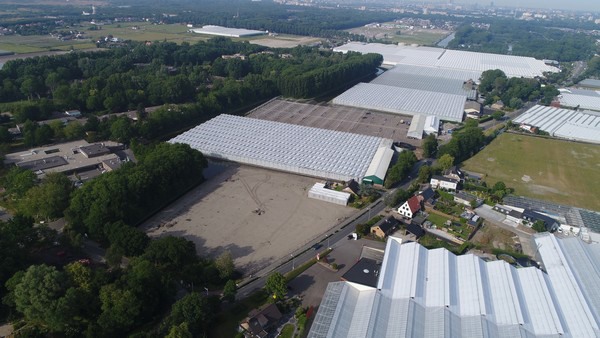
This year Jongfresh gains 1.5 hectares of greenhouses with a large processing room as soon as an old greenhouse next to their location in Monster is demolished, rebuilt, and linked to their existing primary location. “It remains challenging with all the different orders, but this will be a bit easier to do soon.”
Right to exist
In the last couple of years, more then ever, there has been a push for innovation in cultivation, especially on a production level in order to differentiate. The cultivation method is one of the tools used to realize this push. “Everyone sees the importance of providing added value for company continuity and maintain the right to exist. The choice is between cultivating large amounts as inexpensively and efficiently as possible in which technique is helpful but directly available to everyone else as well, or trying to innovate in terms of varieties and trying to stay ahead of the pack that way.
"We picked the latter option, now with breeding company Hazera in our corner. In doing so, we try to rearrange the entire product line from seed producer to consumer in a way that everyone benefits from it now and in the future. We are capable of continuing to innovate and surprise with new varieties and flavors.”
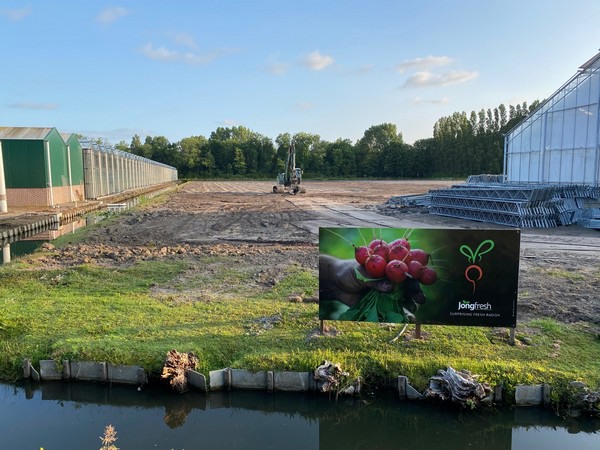
In week 24, a sign was placed on the new lot. So, for everyone who didn’t yet know who was going to build there…
Concept 2.0
A new variety requires a new concept. The concept is already in Erik’s head and in the works. “The new concept will be completely separate from Red Swing as soon as there is no more possibility of it leading to confusion. If you were to call Red Swing the ‘standard’, then this new concept will be version 2.0.”
There are still a few challenges to overcome. One of which is the discussion about packaging. “Plastic is now being looked at in a way that forces the sector to look for alternatives. We also have an alternative ready to go. Still, packaging materials need to be bought in bulk, and there is the risk that in maybe half a year or so, the entire concept might fail because consumers will not want to buy it. In sales and with retail, everybody knows how important packaging is, but especially retail has to deal with the consumers' opinion on it. It is difficult for anyone to predict how this opinion will evolve over the years.”
Throughout the entirety of the discussion, that at its core is about sustainability; transparency seems to be the only real, enduring aspect, according to Erik. “How great would it be if you end up being able to see who harvested your radishes on our packaging because it is possible to see a video of that person. That is even more telling than a label or a certificate. With a personal message, a product becomes even more real, and it will be a mix of tasting and seeing, causing the consumer to keep buying radishes.”
This article previously appeared in the 6th edition, volume 34 of Primeur. See www.agfprimeur.nl.
For more information:
Jongfresh GP
Erik de Jong
erik@jongfresh.nl
www.jongfresh.nl
